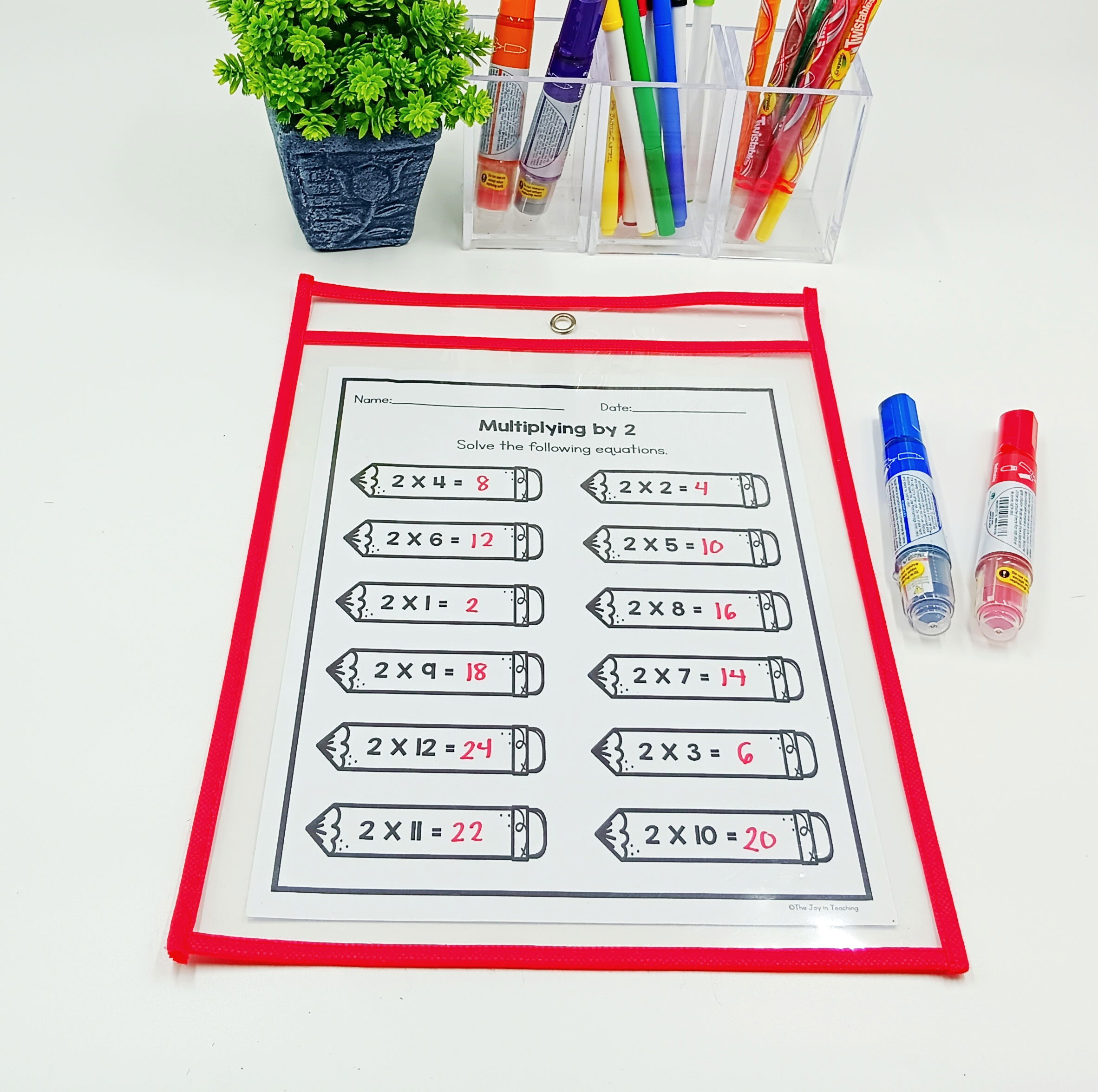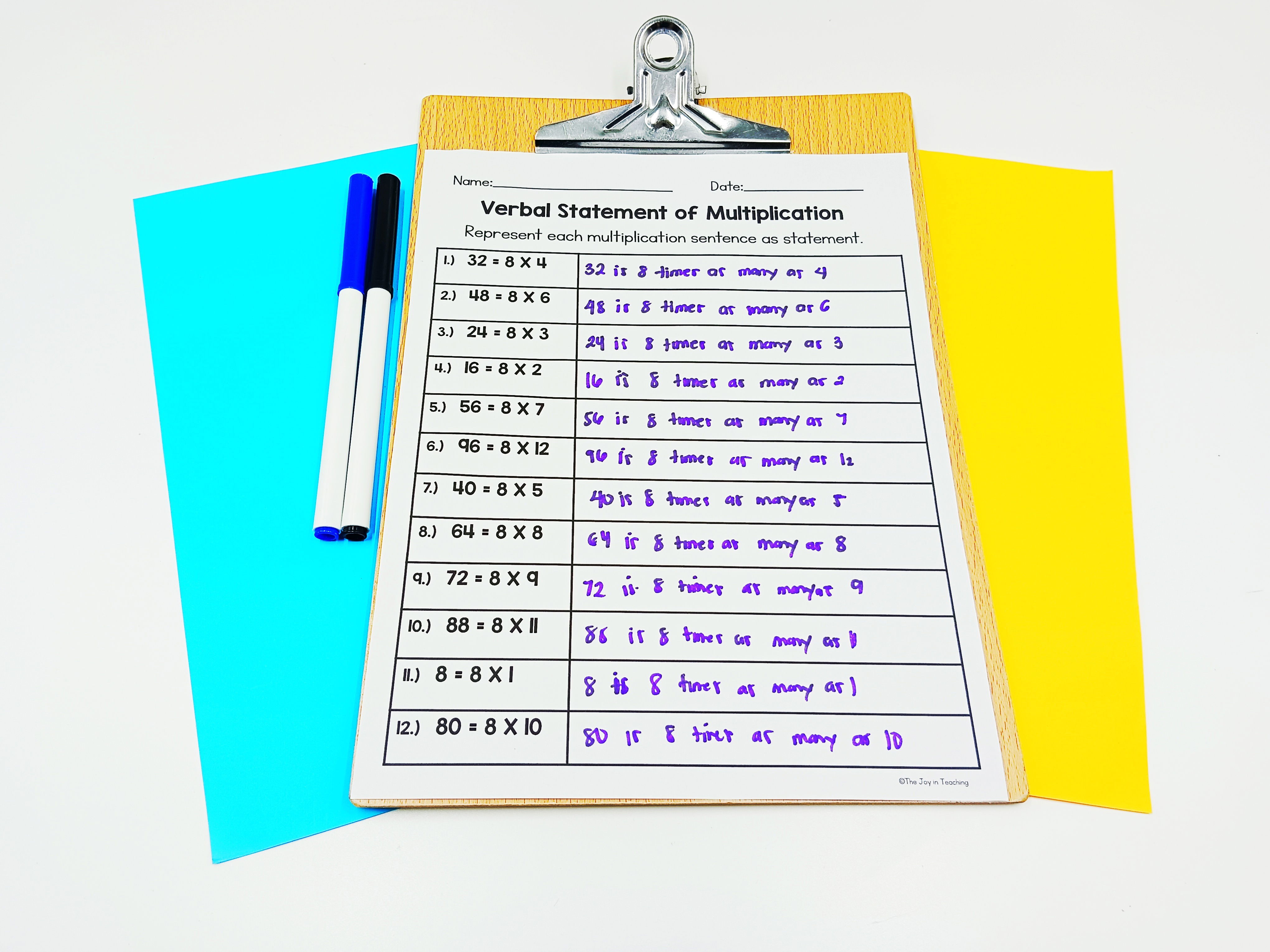How to Teach Multiplication in a Fun Way: Engaging Strategies for Parents and Teachers
Teaching multiplication doesn't have to be a monotonous march through endless rows of numbers. With the right tools and a dash of creativity, multiplication can become a delightful adventure for students.
Why Fun Matters in Learning Multiplication
Let’s take a moment to understand why making learning fun is crucial. When students enjoy what they are doing, they are more likely to engage deeply and retain information longer. Fun activities can reduce anxiety, increase motivation, and make abstract concepts more tangible. Plus, who doesn’t love a good laugh while solving equations?
Multiplication Activity Must Haves:
1. Multiplication Chart 1-12 A multiplication chart is the Swiss Army knife of multiplication tools. This chart covers products from 1 to 12 and is perfect for reference and practice. It includes various methods such as arrays, equal groups, repeated addition, and number lines. Students can cut out the chart, use it as a bookmark, or hang it as a poster. It’s a versatile tool that makes memorizing multiplication facts a breeze.

2. Multiplication Skip Counting Skip counting is the gateway to multiplication mastery. Skip counting worksheets come with cute clip art images to make filling in the missing numbers more enjoyable. Whether used as worksheets, assessments, or laminated for repeated practice, these activities reinforce the connection between addition and multiplication.

3. Multiplication True or False Challenge your students with true or false multiplication statements. This activity not only reinforces multiplication facts but also sharpens critical thinking skills. Plus, the inclusion of adorable cat and dog clip art makes the task more appealing. Kids will love the cut-and-paste format, making it a fun center activity or homework assignment.

4. Multiplication Worksheets 1-12 Repetition is key in mastering multiplication, and these worksheets provide ample practice. Covering multiplication facts from 1 to 12, these sheets can be used as worksheets, homework, or assessments. Laminate them for center activities or morning work to ensure frequent practice.

5. Multiplication Riddles Who doesn’t love a good riddle? Multiplication riddles combine problem-solving with deductive reasoning. With 37 riddles to crack, students will be eager to solve multiplication equations to find the answers. This activity is perfect for engaging students and adding a fun twist to multiplication practice.

6. Multiplication Number Line Visual learners will benefit greatly from number line worksheets. These activities help students visualize multiplication as repeated addition. The number of hops on the line equals the number of times a number is multiplied, making the concept clear and intuitive.

7. Multiplication Repeated Addition Transitioning from addition to multiplication can be seamless with repeated addition worksheets. These activities help students understand that multiplication is just a faster way to add. It’s a great introductory practice that links addition directly to multiplication.

8. Multiplication Missing Numbers Missing numbers worksheets challenge students to find missing factors or products in multiplication equations. This activity strengthens problem-solving skills and introduces the concept of division as the inverse of multiplication, laying the groundwork for future math success.

9. Multiplication Task Cards Task cards are a fantastic way to promote interactive learning. These task cards cover a variety of problems, including mental multiplication, arrays, equal groups, and word problems. Use them for independent practice or group activities to keep learning dynamic and engaging.

10. Multiplication Using Arrays Arrays are a powerful visual tool for understanding multiplication. These worksheets encourage students to create arrays using paint and cotton buds, turning math into a hands-on art project. This approach helps students see the multiplication equation in a visual format, making it easier to grasp.

11. Multiplication Using Equal Groups Understanding multiplication through equal groups reinforces the concept of repeated addition. Students draw groups and objects, then write the corresponding multiplication sentence. This activity makes the abstract concept of multiplication more concrete and relatable.

12. Multiplication Word Problems Applying multiplication to real-world scenarios helps students see its practical value. Word problem worksheets present various situations where multiplication is needed, making the learning process relevant and engaging. These can be used as worksheets, homework, or task cards.

13. Multiplication Verbal Statements Verbalizing multiplication expressions helps solidify understanding. These worksheets align with Common Core standards and encourage students to articulate multiplication equations verbally. This practice enhances their comprehension and communication skills.

14. Area Model Multiplication Area models provide a visual representation of multiplication as the product of two dimensions. These worksheets guide students through multiplying one-digit numbers by larger numbers and two-digit numbers using area models, reinforcing place value and multiplication concepts.

15. Box Method Multiplication The box method breaks down multiplication problems into smaller, manageable parts. These worksheets help students master this method, making complex multiplication tasks simpler and more approachable.

16. Distributive Method of Multiplication Understanding the distributive property is crucial for efficient calculation. These worksheets explore this property, helping students decompose and distribute factors for easier multiplication.

17. Lattice Multiplication Lattice multiplication is a unique method that breaks down multiplication into smaller steps. These worksheets make this method fun and accessible, guiding students through multiplying larger numbers in an organized way.

18. Multiplication FOIL and Array Method The FOIL (First, Outside, Inside, Last) and array methods provide alternative strategies for multiplication. These worksheets introduce these techniques, expanding students' problem-solving toolkit and making multiplication more versatile.

19. Properties of Multiplication Understanding properties like the commutative, associative, and distributive properties is essential for mastering multiplication. These worksheets use cut-and-paste activities, equation writing, and problem-solving to make these properties clear and engaging.

20. Standard Algorithm Method Fluency in the standard algorithm is a key multiplication skill. These worksheets offer practice in multiplying multi-digit numbers using this method, ensuring students can perform calculations accurately and efficiently.

Tips and Tricks for Making Multiplication Fun
Now that you’re equipped with an arsenal of multiplication activities, here are some tips and tricks to make learning multiplication even more fun for your students:
1. Gamify the Learning
Turn multiplication practice into a game. Use flashcards, online multiplication games, or create a classroom competition. Rewards and positive reinforcement can make a big difference in motivation.

2. Incorporate Technology
There are countless apps and online resources that make learning multiplication interactive and engaging. Use educational games and apps to reinforce multiplication skills in a fun way.

3. Use Real-World Examples
Help students understand the relevance of multiplication by using real-world examples. Cooking, shopping, and even sports can provide practical applications of multiplication.

4. Create a Multiplication Story
Encourage students to create stories that involve multiplication. This creative approach can help them visualize and remember multiplication facts better.

5. Integrate Arts and Crafts
Activities like creating arrays with paint or drawing equal groups can make multiplication more tangible. Combining math with arts and crafts can enhance understanding and retention.

6. Utilize Music and Rhymes
Songs and rhymes are powerful memory aids. There are plenty of multiplication songs available that can help students memorize multiplication tables in a fun and rhythmic way.

7. Celebrate Progress
Acknowledge and celebrate students’ progress. Whether it’s mastering a new times table or solving a difficult problem, positive reinforcement can boost confidence and encourage continued effort.

Conclusion Teaching multiplication doesn’t have to be a daunting task. With the right resources and a bit of creativity, you can make multiplication an exciting and engaging part of your students' learning journey. So, get ready to inspire your students with fun, hands-on multiplication activities and watch them thrive in their mathematical adventure! Happy multiplying!
Follow Me for More Teaching Tips with Joy For more tips, resources, and a daily dose of teaching joy, follow me on:
Got questions or want to share your success stories? Drop me an email at thejoyinteaching@gmail.com. I love hearing from fellow educators and parents! Happy Teaching!
Joy Medalla
The Joy in Teaching 💛